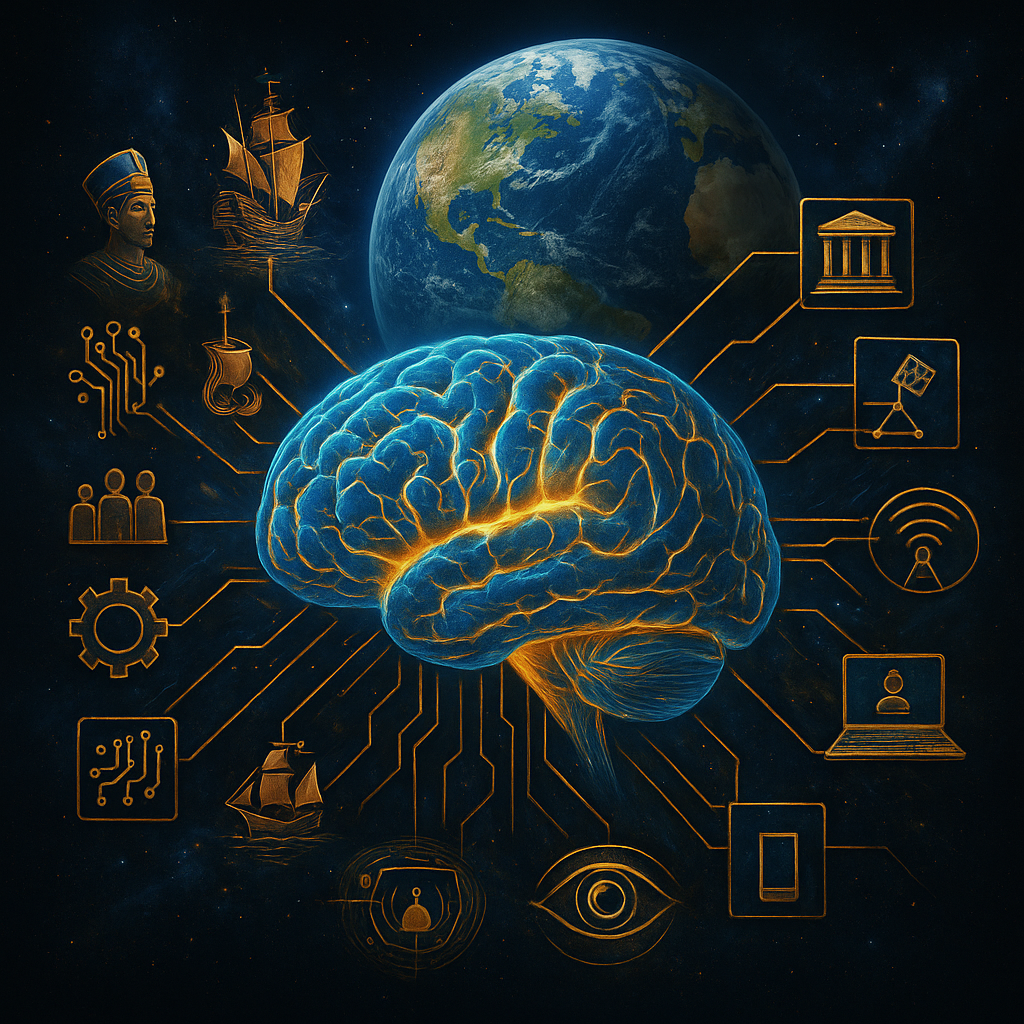Mind Control

Mind control is the deliberate shaping of human perception, attention, and behavior, refined over thousands of years. It has been wielded by individuals, priests, kings, generals, corporations, and governments to steer populations at every level — local, national, regional, and global. It is the most scalable power on Earth. Armies can destroy, but minds can be conditioned to obey, surrender, or even desire what benefits power. At the same time, every great religion and philosophy has preserved systems of self-mind control — ways to program your own mind instead of being programmed. Understanding this difference is the key to freedom and influence.
The History of Mind Control
From the start of civilization, leaders have used ritual and environment to control thought. Ancient temples were not just places of worship but sensory machines. Priests designed sound, light, smell, and imagery to overwhelm rational faculties and implant awe. In Egypt around 1500 BC, temple chambers were tuned to vibrate with chanting. In Greece, initiates at the Eleusinian Mysteries fasted, drank psychoactive potions, and underwent intense rituals that shattered ordinary consciousness before rebuilding it with new visions. These were not accidental traditions; they were structured systems of psychological conditioning.
Rome perfected spectacle. Parades, gladiatorial games, public executions, and coins with imperial faces embedded loyalty and fear through constant repetition. When Christianity became state religion in 380 AD, its rituals of incense, stained glass, chanting, and confession scaled into a global psychological empire. Worship was an immersive sensory experience — training people to think and feel within a prescribed framework.
As technology advanced, mind control scaled. The printing press turned ideas into mass weapons. Martin Luther’s 95 Theses in 1517 sparked a memetic war across Europe. Propaganda pamphlets reframed reality for millions. By 1794, Robespierre’s Festival of the Supreme Being showed how ritual and spectacle could rewrite belief systems overnight, shifting loyalty from Church to State.
Industrial-age propaganda refined the craft. During World War I, official ministries mass-produced atrocity stories, posters, and films to manufacture consent. Edward Bernays’ 1928 book Propaganda codified the principles: public opinion could be engineered systematically. Nazi Germany used radio and public rallies to indoctrinate at scale, the Soviet Union used Pavlov’s conditioning to develop interrogation and reeducation, and Mao’s China combined mass rallies, group confession, and isolation to break and rebuild mental identities. The CIA’s MK-Ultra program from 1953 to 1973 experimented with LSD, hypnosis, sensory deprivation, and covert drugging to test behavioral modification. Even when such programs failed to create a “Manchurian Candidate,” they refined tools of manipulation now embedded in psychological operations worldwide.
Today, mind control is decentralized, automated, and personalized. Instead of priests or ministries, algorithms and platforms shape the mental environment of billions. They study behavior, predict responses, and deliver stimuli — outrage, affirmation, fear, novelty — designed to keep attention captured and decisions shaped. They do not need to issue orders; they simply alter what you see, when you see it, and how often. Your nervous system is trained without your knowledge. What once required stadiums now happens invisibly in your palm.
How Religions and Philosophies Teach Mastery
All major religions and philosophies combine two threads: methods for leaders to shape thought at scale, and methods for individuals to train themselves. Cathedrals, mosques, temples, and rituals unify masses through synchronized action, sound, and imagery. At the same time, they encode practices of self-mastery — mental operating systems for individuals.
Christianity teaches fasting, prayer, confession, and meditative reading of scripture to discipline attention and impulse. Monastic orders built schedules of silence and repetition to master thought patterns.
Buddhism teaches mindfulness, meditation, and the Eightfold Path as explicit training to dissolve automatic mental habits and cultivate concentration and equanimity.
Islam uses five daily prayers, Ramadan fasting, and dhikr (chanting God’s names) to interrupt unconscious patterns and anchor consciousness repeatedly in chosen focus.
Hinduism codified yoga in Patanjali’s Yoga Sutras around the 2nd century BC, prescribing postures, breathwork, and mantra to systematically rewire the nervous system.
Judaism emphasizes daily prayer (tefillah), dietary discipline through kashrut, and weekly Sabbath observance — a radical reordering of time to structure consciousness. Mystical traditions like Kabbalah introduce visualization, chanting, and layered symbolic interpretation of texts to refine perception and connect individual awareness to cosmic order.
Scientology develops systematic self-training through auditing and the use of “processing” techniques intended to identify and clear unconscious mental patterns (engrams). Its founder explicitly framed it as a mental technology — a structured way to reprogram thought and achieve self-mastery.
Stoicism taught premeditatio malorum to build resilience. Samurai practiced mushin (“no mind”) to act fluidly under stress. Sufis, Kabbalists, and Christian mystics all used chanting, visualization, and sensory control to achieve altered states.
Across traditions, the methods range from chanting and fasting to visualization, breathwork, confession, and meditation. These are not metaphors but deliberate mental programming systems thousands of years old. They prove that mastery of the mind can be taught, scaled, and replicated across cultures and eras.
How Power Uses Mind Control at Scale
Mind control at scale is the operating system of politics, corporations, and powerful individuals. It shapes what people know, what they believe, and what they do without overt coercion.
Politics uses narratives to frame reality. Locally it’s speeches, ceremonies, and symbols; nationally it’s control of education and media; regionally and globally it’s funding NGOs, think tanks, and online campaigns to shift discourse. Mass rallies synchronize bodies and minds; hidden subsidies influence what stories appear where.
Corporations use advertising and behavioral design to create habits and identities. They associate products with archetypes, emotions, and social status. Today, digital platforms track every click, predict desires, and deliver stimuli to keep attention fixed and behavior predictable. This is not persuasion in the old sense — it is operant conditioning scaled to billions.
Individuals with influence — cult leaders, celebrities, influencers — use the same mechanics: rituals, repetition, emotional leverage, carefully staged releases, “insider” groups, and love-bombing to create loyalty and obedience.
Tools of power include controlling flows of information, dividing groups into identity tribes, cloaking extraction under virtue (“for your safety,” “for progress”), controlling capital and supply chains, and using invisible levers like algorithmic ranking or shadowbans. These tools align incentives so no conspiracy is needed — people steer themselves.
Mind Control for “Good”
The same methods can be used to achieve collective goals. Governments and organizations have used mental influence to increase positive behaviors: persuading citizens to buy war bonds and plant victory gardens in World War II, normalizing recycling in Japan in the 1970s, nudging people to vaccinate, save for retirement, or have more children. Slogans, education campaigns, defaults, and incentives all shift behavior at scale without mandates. This is mind control framed as public policy — invisible governance of the nervous system to achieve a desired outcome.
Mind Control in War and on the Battlefield
War has always been fought in the mind as well as the field. Armies dropped leaflets to demoralize opponents, broadcast misinformation, and used psychological operations to erode will before combat. In Vietnam, “Operation Wandering Soul” broadcast ghostly sounds to exploit local beliefs and terrify fighters. Today, digital operations replace leaflets. Bot farms flood networks with narratives, amplify or suppress narratives, create illusions of consensus or controversy, and polarize populations simultaneously. The objective is not just to win territory but to shape the mental terrain of the enemy — decision paralysis, distrust, division. Modern cognitive warfare aims to collapse cohesion before the first shot is fired.
The Battlefield of the Mind
The true battlefield of the 21st century is the human mind. Whoever controls attention controls action. Whoever shapes perception shapes reality. Future conflicts will deploy deepfake sensor data, synthetic eyewitnesses, and AI-personalized propaganda to overwhelm decision-making. Trust will be eroded; cohesion will collapse. The battlefield will not be fought with bombs first but with information, emotions, and identity. This is not coming — it is already here.
Mastery of the Mind
The antidote is self-mind control. You cannot escape influence; you can only decide whether to be programmed externally or internally. Mastery of the mind transforms you from a passive node in someone else’s system to an active architect of your own. This is not one technique but a progression.
It begins with awareness: noticing how your attention is hijacked. Without this, nothing else works. Awareness reveals the hooks in your nervous system. Next is control of inputs: fasting from noise, curating information, and choosing deliberately which teachers, texts, and environments you will allow to shape you. Then comes deliberate practice: meditation, breathwork, visualization, cognitive reframing, and habit design. Each layer upgrades your mental operating system.
As you progress, new capacities unlock. Training focus sharpens perception. Training emotional regulation flattens stress responses and builds resilience. Automating supportive habits frees cognitive energy for creation, strategy, and intuition. Mastery compounds. Your mind begins to run chosen patterns automatically, leaving bandwidth for innovation and higher-order thinking.
Religions and philosophies have always taught this in stages. Monks progress from novice to adept through repetition and discipline. Samurai moved from basic technique to mushin — action without hesitation. Yogis progress from asana to samadhi — deep absorption where focus is total and effortless. These stages transform the practitioner from being shaped by external forces to shaping their own internal reality — and from there, influencing external reality deliberately.
Modern science echoes this ancient knowledge. Daily meditation alters brain structure within weeks. Visualization primes neural circuits, making execution faster and more precise. Cognitive reframing dissolves entrenched loops. Habit stacking builds automated systems that support goals without willpower. At advanced levels, mastery scales beyond personal performance. Leaders who master their minds project calm under chaos, becoming anchors in crises. Teams and movements built around self-mastered individuals develop collective resilience and clarity. This is how revolutions succeed, armies hold under pressure, and civilizations are built.
Mastery of the mind at scale is the antidote to manipulation at scale. Each step of mastery gives you more freedom, clarity, and power to direct your life and shape the world. It is not just self-help — it is the deepest layer of power. The same law used by priests, generals, prophets, monks, and now algorithms applies to you. Whoever commands the mind — first their own, then others’ — shapes destiny. That is the ultimate power.




